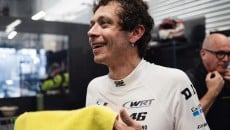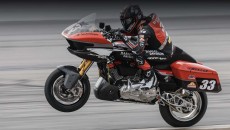There is a lot of interest surrounding KTMs return to MotoGP. The Austrian manufacturer has decided to launch an assault on the most prestigious and toughest motorcycling championship. Tests have been going on for more than a year with different test riders and at Valencia, the final GP of the season, Kallio will take the RC16 out on track for its first race.
As with the Moto3 and new Moto2, KTM hasn't relinquished the trellis frame for its MotoGP, while the engine is a V4. Kurt Trieb, the chief designer, has spoken at length about the new engine on the company's official blog. The same engineer who designed the 990cc engine that equipped the KR in 2005, and who also designed that of the Moto3.
“We've tried to avoid any mistakes we made back in 2005 and have looked at the old design, experience helps - he explains - This was a strong engine which wasn’t given a chance to show its true potential. There were some problems but we built the first five engines and then went racing with them. It was a completely crazy situation! Now we have a proper test and development plan.”
The choice again came down to a V4.
"There are many advantages to go for a V4, in engine performance and mechanical reliability - he underlines - An inline four wasn’t considered to be a KTM characteristic. In the end we didn’t really have many discussions about what configuration to go for, but more on the angle of the Vee."
Building an engine for MotoGP is no walk in the park.
"There are some restrictions, for example, the maximum diameter of the bore is 81mm. It doesn’t make sense to build an engine that can reach 20,000rpm as the valve sizes are too small for this to gain anything - explains the engineer - So there’s a natural maximum engine speed that matches with this bore, somewhere between 16,500-18,000rpm. These figures are also valid for our engine."
But that's not all.
"You also need to try to achieve a good power characteristic - continues Trieb - For example, the slowest corner in Jerez sees the engine revs go down to 5000rpm. So if you have your maximum power at 17,500rpm for example, you need to consider a wide range of power to suit all tracks. Our first 990 GP engine really only worked above 8000rpm, so this was clearly a problem."
So how much power does a MotoGP engine need to supply?
“You see Ducati with the most powerful engine and for instance Yamaha with less, but then Yamaha wins the race. That’s the compromise you have to find and be fast on every track; to set great lap times everywhere and give the rider a good feeling” he concludes.









